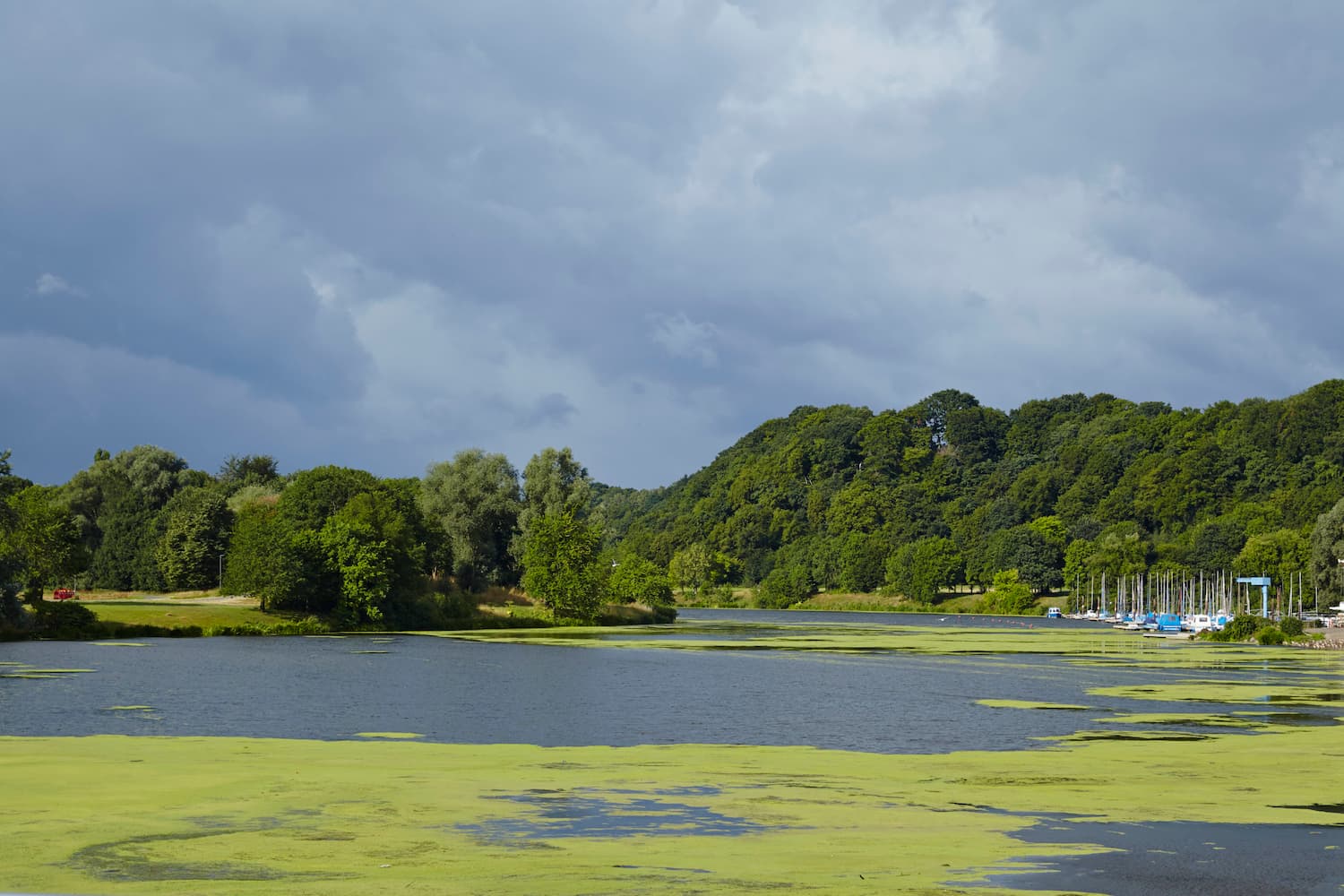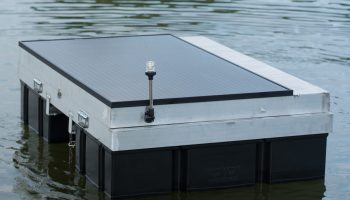Intro to Ultrasound
This resonance weakens the algae's internal structure, damages gas vesicles (which control buoyancy), and disrupts their ability to photosynthesize and reproduce. As a result, the algae sinks, starves, and dies—without harming fish, plants, or the surrounding ecosystem. It’s a non-invasive, chemical-free approach that leverages physics to restore balance to your water, 24/7.

Ultrasound: Tuned to Kill

Ultrasound exists across a broad spectrum, and not all frequencies are safe—or smart—for water treatment. High-powered ultrasound, for example, can cause cavitation: microscopic bubbles that violently collapse, generating extreme heat and pressure. While that may sound cool, it’s lethal to everything in its path—not just algae.
SonicPure takes a different approach: it uses specific ultrasonic frequencies to which algae are highly sensitive. When exposed, their internal structures vibrate, disrupting buoyancy and reproduction. As a result, they sink and die—without chemicals or side effects.
Algae are surprisingly sensitive to specific ultrasonic frequencies. When exposed to the right sound waves, their internal structures begin to vibrate, disrupting buoyancy and reproductive function. The result? They sink and die—without chemicals or collateral damage.
The idea of using sound to fight algae actually began by accident. Legend has it that, over a century ago, gunfire near a stagnant, algae-covered waterway mysteriously cleared the bloom. It sparked a question that took generations of research to fully answer: Can targeted sound really clean water?
Yes—but only when tuned correctly.
Beyond algae, ultrasonic waves also disrupt anaerobic bacteria that form biofilm—a sticky layer that fuels Zebra Mussel infestations. By preventing this foundation from forming, ultrasound doesn’t just clean water—it cuts the problem off at the source.
Ultrasound operates by producing frequencies that match the natural resonant frequency of algae cells—the specific vibration rate at which their internal structures begin to break down. Just like an opera singer can shatter a wine glass, ultrasonic sound waves can create internal resonance within algae, disrupting their vital functions.
In blue-green algae, this resonance collapses gas vesicles that control buoyancy, causing the cells to sink below the photic zone where they can no longer photosynthesize—effectively starving them. In green algae, ultrasound disrupts the cellular membrane itself, leading to a gradual breakdown over 3–4 weeks.
But to make ultrasound viable for widespread algae and biofilm control, two core challenges had to be solved:
- Identifying the precise frequencies effective across many species of algae and biofilm;
- Delivering those frequencies at the right range and intensity to achieve targeted results.

With over a million known species of algae and biofilm, a one-size-fits-all solution doesn’t work. Early ultrasonic systems relied on just a few frequencies. Today’s leading technology—thanks to pioneering work by George Hutchinson, the father of modern ultrasonic algae treatment—employs over 4,000 carefully tuned frequencies.
Each frequency plays a specific role: some rupture gas vesicles in blue-green algae, while others interfere with cell wall integrity or reproductive processes. In many cases, effects begin within 24 hours of treatment.
For ultrasonic treatment to be effective, proximity matters. The sound must be introduced within a specific range—typically between 70 and 400 meters—depending on the target organism and environment.
Much like floating warships, WaterIQ Technologies™ ultrasonic solutions create a veritable algae-crusading navy, ready for battle. To cope for the aforementioned distance limitations, devices are often deployed in multiples – creating concentric circles of coverage that work their destructive magic in symphonic synergy.
You’ll often find these floating algae fighters in places such as large lakes and reservoirs, private and recreation ponds, golf courses, wineries, municipal water facilities, storm retention ponds, and aquaculture settings.
As adept as these ultrasonic waves can be in dispatching multicellular organisms, they’re actually pretty safe for non-algal beings. Unlike chemicals or other treatment methods, ultrasound, properly done, is not harmful for the environment, creating no harmful effects on animals, fish, birds, and human beings, as well as beneficial aquatic plants. On that last notion, ultrasonic treatment isn’t effective on algae that masquerades as plants – species such as pithophora, chara, nitella, hydrodictyon and more.
The list of advantages for ultrasound is plentiful, and includes:
- Eco-friendly process
- No permitting required
- No creation of harmful byproducts
- No genetic mutation of surviving species
- Simple installation with minimal maintenance
- Inexpensive to run (less than 50 watts of power)
- Relatively quiet operation (most ultrasonic output is inaudible to humans).
- Reduces reliance on chemicals
And, though ultrasound is meant to be an alternative to the use of chemicals (such as copper sulfate, which is the granddaddy of chemical algal treatment), it is most effective when used as a “tool in the toolbox” – a treatment option supplemented by a selection of other remedies to achieve 100 percent coverage.




